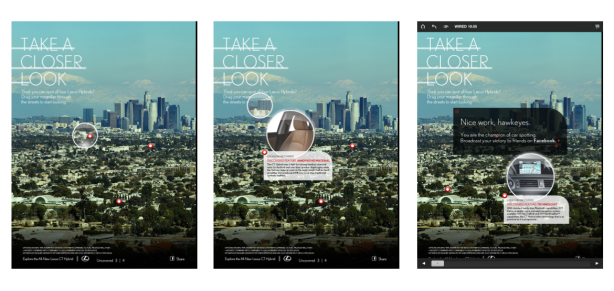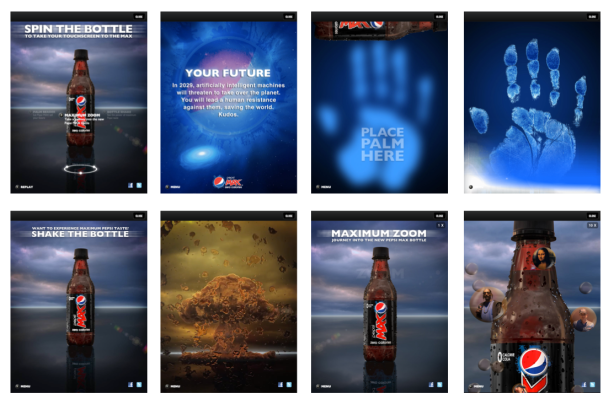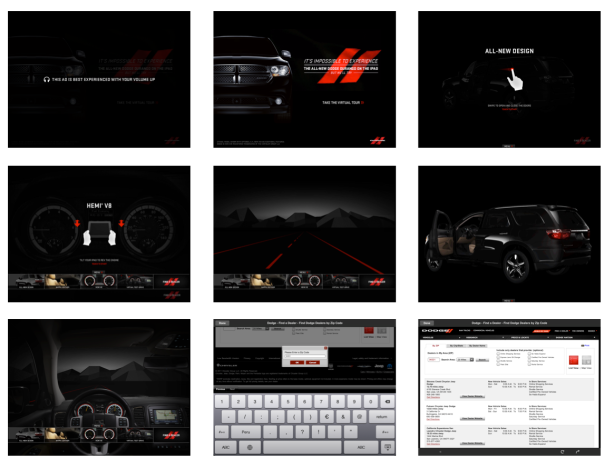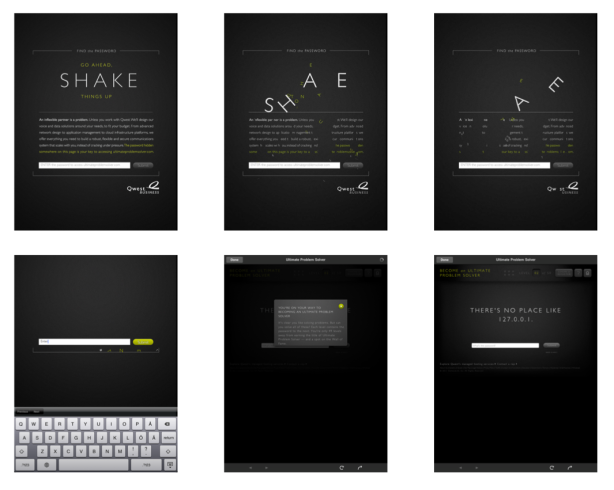Engaging Advertisements
Engaging ads are very online ad-like by nature. These highly interactive ads contain a lot of multimedia and are often built around a certain engaging element, such as a game or other similar activity (Appendices 53, 54, 55 and 56). In contrast to online advertising, engaging advertisements can utilize a haptic element. In order words, consumers may touch or manage the ad physically. The haptic elements, essentially, not only take advantage of the possibilities in touch screens but also utilize the tilt and shake recognition of tablets (Appendix 56). Fundamentally, these kinds of engaging ads are a clever combination of entertainment and online gaming.
A car manufacturer’s advertisement in Wired magazine (Figure 53) enables readers to touch and browse the ad. The basic look and feel of the ad is pretty static but what makes this advertisement engaging is that it has several hidden hotspots that contain more information about the advertised product. This “hidden” content can be found when different parts of the ad are tapped by finger. The ad is somewhat similar to a mobile game where a player tries to attain new achievements. This kind of ad may capture readers’ attention by invoking their curiosity. Even though the content of the ad may not be relevant to all readers, the format of the ad may still be inviting and challenging.
Pepsi’s ad in the Daily (Figure 54) is a combination of touchable elements and playfulness; a reader can, for example, try to explode a Pepsi bottle by shaking it or even see to his/her future by placing his/her palm on the ad. This kind of ad entails also an ability to engage readers and induce them to spend more time with the ad. As the ad has several sub-pages and functionalities, a reader may want to browse what else can be found in the ad.
Dodge’s ad in Wired (Figure 55) is also a highly dynamic and playful example of engaging ads. The ad is a combination of touchable elements and tilt recognition. A reader can, for example, open or close car doors. In addition, one can listen to the sound of the engine by tilting the tablet device up and down. Even further, the car can be taken to a “test drive” and the steering wheel can be turned by turning the tablet device. Even though the ad contains several engaging elements, the main message of the ad is that one can not experience the real Dodge car just by playing with an iPad. Therefore, a reader is advised to fill his/her contact information so that the car dealer can invite him/her to a test drive.
In this Wired magazine ad (Figure 56) the level of engagement has been taken to the extreme. The basic look and feel is static but after shaking the ad (i.e. tablet device) the ad starts to collapse. Then the ad transforms into a mystery solving game that consists of 50 different riddles. In each riddle, there are certain cues in the ad that can be used for problem solving. In order to pass all the riddles, a reader may have to spend hours (even) with the ad. It becomes evident from the top-score list of the ad that many people have actually passed the riddles of the ad and, thus, spent a long long time engaged with service.




Leave a comment